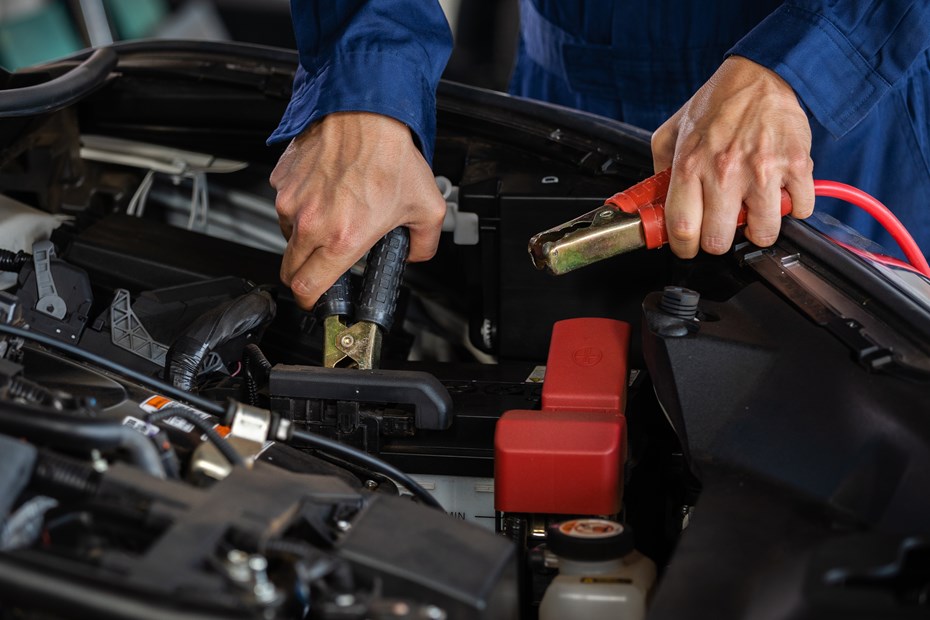A car battery has a finite life and needs to be used or regularly plugged into a battery charger to last as long as possible. If you drive your car every day, you could get up to five years of motoring from a battery before needing to replace it. However, if you have a classic car (or a weekend toy) that’s only driven occasionally, you’re unlikely to get the same lifespan from your battery – especially if you don’t maintain it correctly.
That’s because car batteries degrade over time. Their internal components corrode and the process accelerates if the battery is regularly completely discharged, overcharged, or incorrectly filled with water. Below, we’ve listed our top tips to help you get the longest life from your car battery and save you money on replacing it prematurely.
Some of our tips require you to buy tools such as battery chargers; we’ve included links to the best-value products on the market to set you off on the right foot. You can also extend your car battery’s life by creating new routines, such as regularly taking your car on longer drives and disconnecting the battery earth strap when you return home.
Top 10 tips for car battery maintenance
1. Drive your car regularly

It really is that simple. Every time you take your car for a drive, its alternator (a little generator connected to the engine) produces electricity that keeps the battery topped up with charge. Longer drives are best because it takes some time to regain the charge lost when starting the car – a big drain on the battery. A 30-minute drive once a week should be enough to maintain a healthy battery.
2. If you can’t drive your car, invest in a battery charger
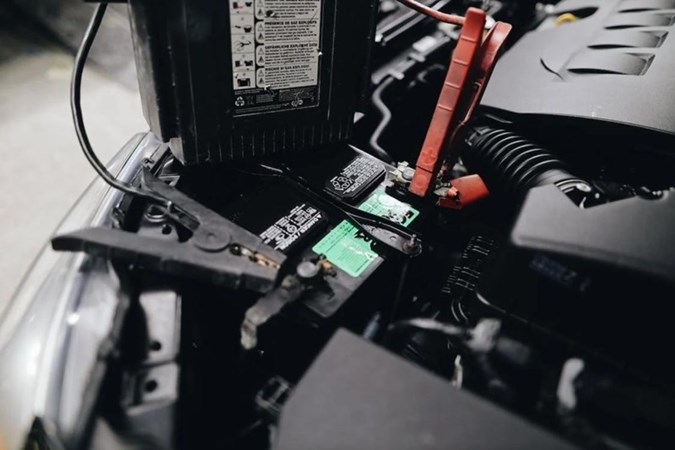
If you don’t drive your car regularly (for instance, if you have a classic car that lives in the garage for months at a time), it’s worth buying a battery charger. Simply connect the battery’s positive and negative terminals to the charger, plug the device into the wall and keep an eye on its voltage meter to make sure the battery doesn’t overcharge. Disconnect the charger when the battery reaches 12.6 volts.
3. Or buy a smart battery charger
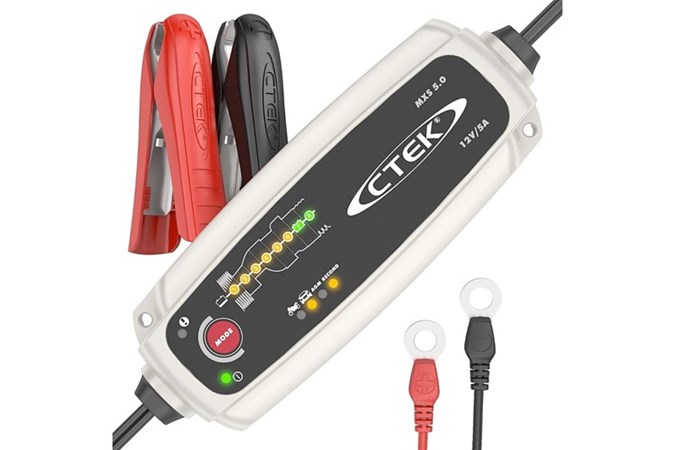
Smart battery chargers are great. They perform basically the same function as a conventional charger, but they have a couple of extra tricks. The biggest boon is that they can recognise when your battery is fully charged and automatically cut the power supply, preventing damage from overcharging. They can also recondition the battery. That’s a charging setting that removes corrosion from the battery’s internal components, regaining lost performance.
4. Don’t idle your engine to charge your battery

Some sources suggest idling your car’s engine is a good way to charge a dead battery. It isn’t. An alternator – which generates electricity – are designed to keep a battery topped up, not recharge it from empty. Attempting to do so will wear out the battery and alternator, and it’s not good for your engine, either. An engine’s internal components aren’t fully lubricated when idling, so wear out more quickly. Idling wastes fuel, as well.
5. Check for parasitic drains
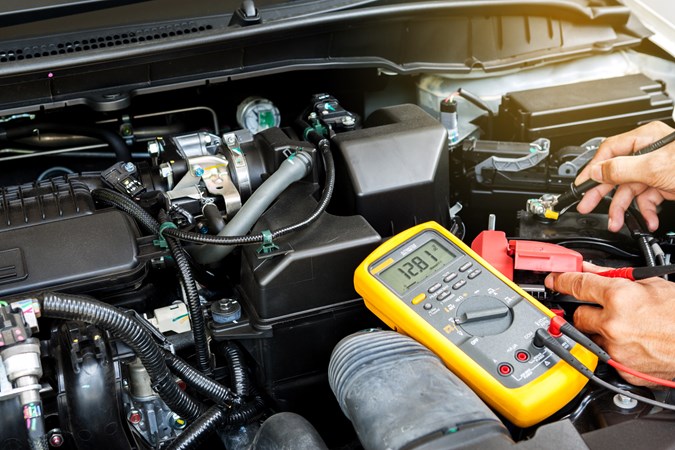
If your car battery is repeatedly going flat, but there’s no obvious cause, you need to test the voltage using a battery tester – also known as a multimeter. With the engine turned off, attach the tester to the battery. If you see the voltage decrease on the multimeter’s screen, there’s probably an electrical component that’s consuming electricity when it shouldn’t be – that’s known as a parasitic drain.
Older cars often have butchered wiring looms and parasitic drains are commonly caused by poor earth connections. Likely culprits include poorly installed headlights and dodgy aftermarket stereos. Faults are tricky to find, and wiring looms are expensive to replace when damaged. Unless you’re confident in your ability to fix the problem, take your car to a garage or call out an auto electrician who can trace and fix the drain.
6. Disconnect the battery earth strap when parked
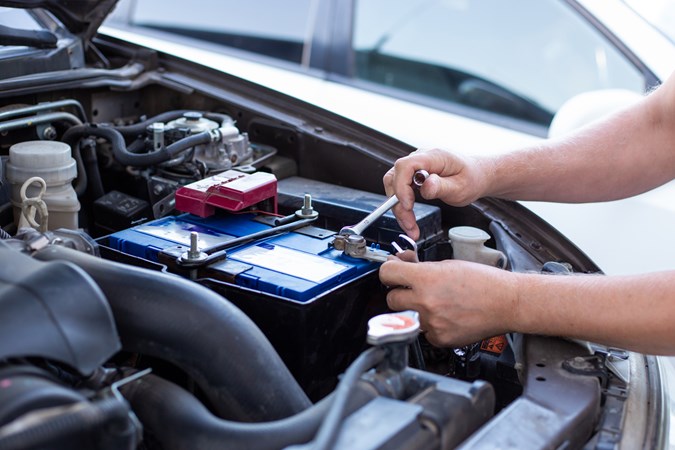
You can temporarily get around an unsolved parasitic drain by continually charging your battery, or disconnecting the earth strap when the car is parked up. Doing so breaks the car’s electrical circuit and prevents the battery sending electricity to the component causing the drain.
The earth strap is usually very easy to find and unbolt with a socket set – consult your car’s manual or search online for where to find it. It’s also a good idea to disconnect it if the car is going to be sat for a while and you can’t hook up a trickle charger.
7. Keep your battery topped up with water
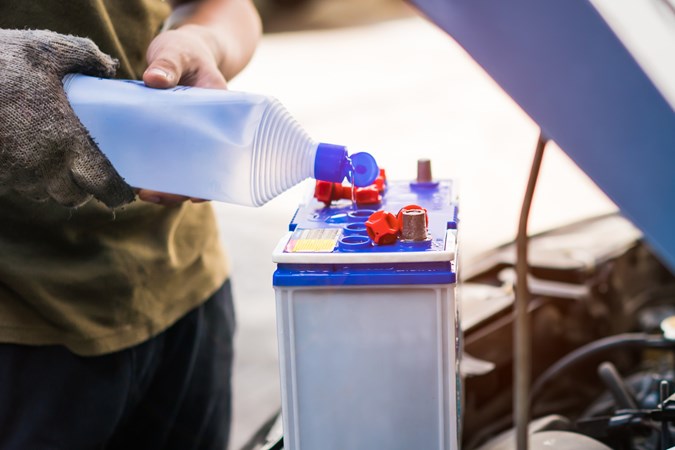
Water and electricity don’t normally mix but they do in the lead-acid battery found in most cars. The battery’s electrolyte is a mix of water and sulfuric acid that’s held between the positive and negative terminals. The water evaporates over time and needs to be replenished. Make sure you do so with deionised water for the best performance.
Most batteries have a sight glass that allows you to check the water level. Be careful not to overfill the battery – diluting the electrolyte too much can shorten the battery’s life.
8. Clean the battery terminals
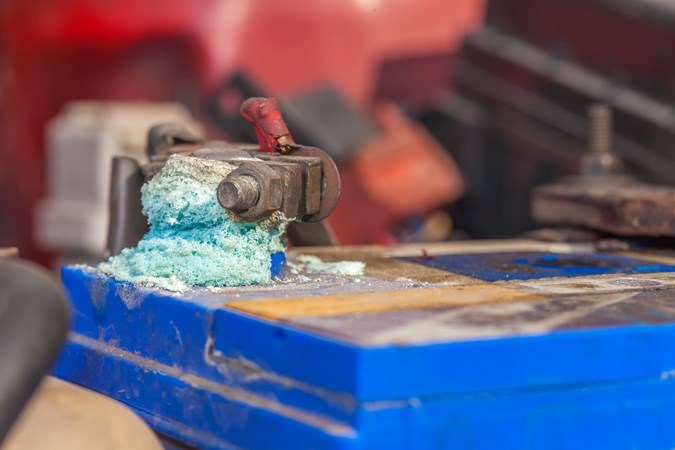
Clean terminals allow electricity to flow more easily between battery and car – dirty terminals can reduce the battery’s life. You can carry out a visual inspection to assess their condition. Open the bonnet and look at the studs on top of the battery. If they’re covered in oil, gunk, rust or green mess like that pictured above, disconnect the battery cables and whip out a wire brush and baking soda.
Mix a tablespoon of baking soda and a drop of water into a paste, disconnect the battery cables, then smear it onto the terminals. Let it fizz for 10 minutes, then scrub the terminals with the wire brush until the muck is removed. Rinse off any excess paste with de-ionised water, then dry the terminals with a clean rag. Reattach the battery cables and you’re good to go.
9. Make sure your battery is secure
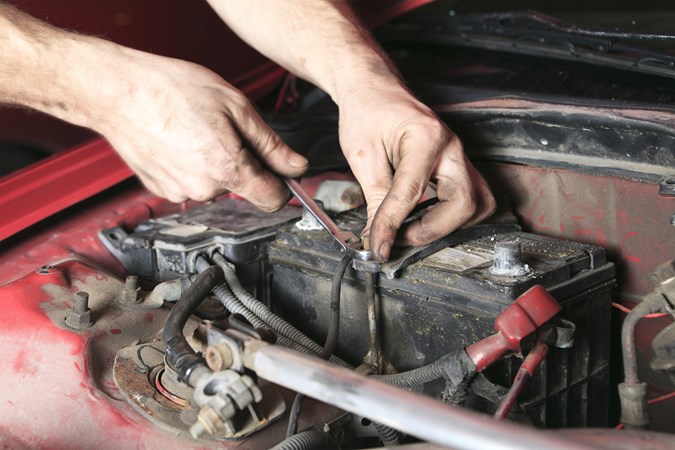
Many car batteries are secured in place with metal straps. Without them it could rattle around in the engine bay and reverberate with the engine’s vibrations, damaging the battery. If your car’s battery seems loose, tighten the bolts holding the straps in place.
Be careful not to overtighten them, though. If you Hulk-out, you could crack the battery case; electrolyte will leak out, rendering the battery useless. Using a small torque wrench helps avoid this situation. If the straps can’t be tightened, the bolts and/or the straps need replacing. Also keep an eye on the condition of the metalwork around and underneath the battery. If it’s going rusty, repairs may be needed.
10. Test your car battery
Carrying out these maintenance tasks is all well good, but you still won’t know what state of health your car’s battery is actually in. However, a battery tester can tell you. There are many to choose from, of varying levels of sophistication. You just attach its leads to the battery terminals and the handset will tell you what state it’s in.
11. If your battery’s beyond saving, replace it
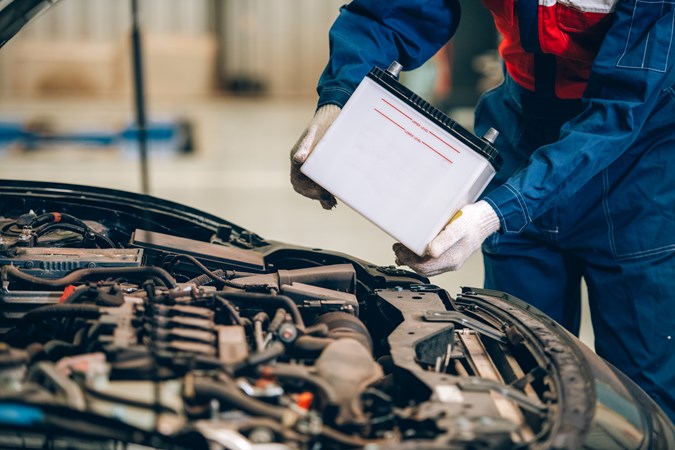
Don’t waste time and money trying to rescue a ruined battery. If it’s past its best, the safest thing to do is replace it with a new battery. It’s a relatively simple process that you should be able to do on the driveway at home with little more than a socket set and some basic safety gear. Read Parkers’ guide to find out how.
FAQs
-
How do I keep my car battery in good health?
The best thing you can do to keep a car battery healthy is to just drive the car regularly. About 30 minutes once a week is sufficient. If you only drive your car once or twice a week, make sure you turn off all the electrical equipment, such as the lights and aircon, before getting out of it. Leaving them on can drain the battery and put more strain on the alternator when you next start the engine.
-
How do I keep my car battery healthy when not in use?
The easiest thing is to disconnect the battery’s leads, thereby breaking the car’s electrical circuit and preventing the battery draining. You could also connect the battery to a charger to keep it topped up with electricity. A trickle charger constantly feeds in a small amount; a smart charger will top it up as and when needed. If the car isn’t in use for many months, it’s sensible to top up the battery water before restarting the car – always use deionised water.
-
How can I make my car battery last longer?
A car battery will generally last about five years before it needs replacing, but it might last a much longer or shorter amount of time. The key to making a battery last as long as possible is to simply drive your car regularly for at least 30 minutes. If that’s not always possible, connect the battery to a charger during any extended periods of inaction.
-
What maintenance does a car battery need?
The best maintenance for a car battery is to regularly drive the car it’s fitted to. But there are some other things you can do, as well. If the car is off the road for a while, disconnect the battery from the car’s electrical circuit and/or connect it to a charger. Also keep the battery terminals nice and clean. There’s more you can besides: scroll to the top of this page for all the hints and tips you need.
Just so you know, we may receive a commission or other compensation from the links on this website - read why you should trust us.


